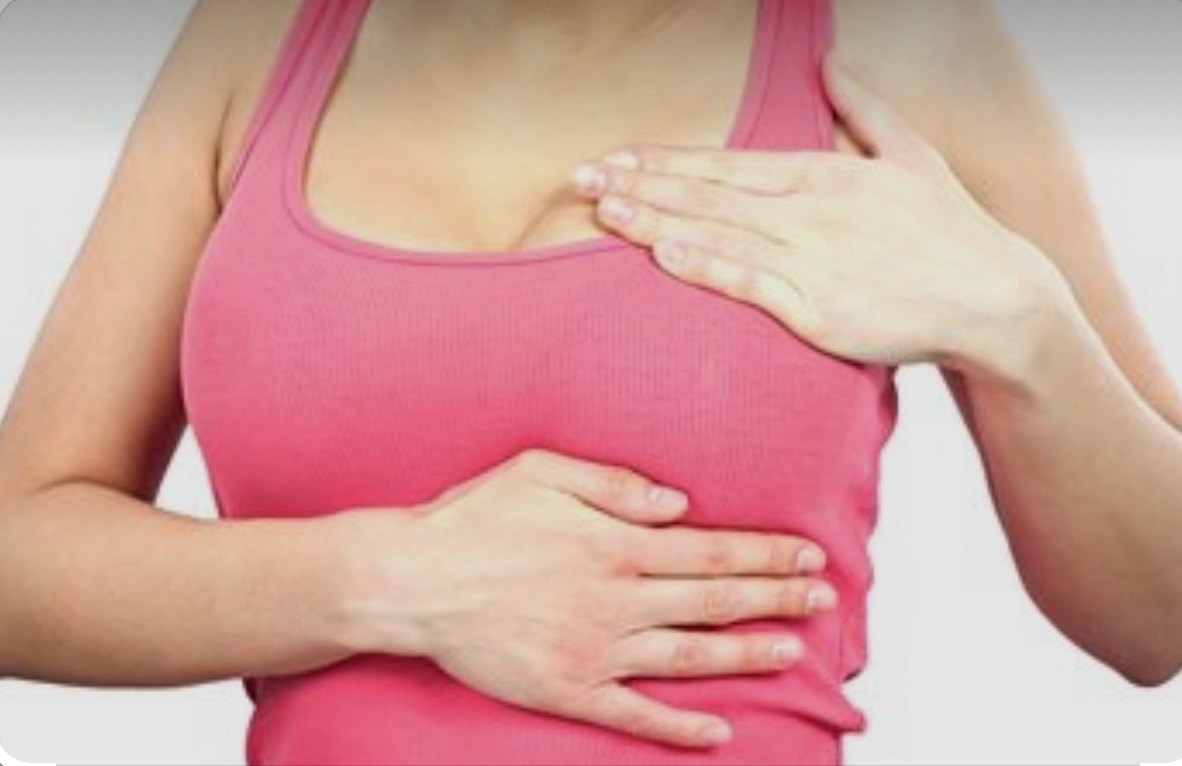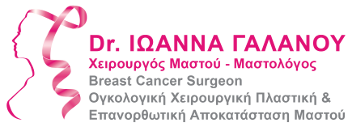
04 Feb Breast Cancer ꓽ Attention to Early and Advanced Signs
Breast cancer generally shows no symptoms at an early stage, early detection saves the patient.
A lump in the breast is the most common presenting symptom.
Warning signs of breast cancer
Initially, a person may notice a change in the breast when performing a monthly breast exam or when minor pain does not seem to go away. Early signs of breast cancer to look for include:
- changes in the shape of the nipple
- breast pain that does not go away after the cycle
- a new lump that does not disappear after the cycle
- red, brown, yellow or clear nipple discharge • unexplained redness, swelling, skin irritation, itching or rash of the breast
- swelling or a lump around the collarbone or under the arm A lump with an uneven shape is more likely to be positive for cancer.
Advanced signs of breast cancer
Later signs of breast cancer include:
- intrusion of the nipple
- lumpiness or swelling of the breast;
- dimpling of the breast surface
- an existing lump that gets bigger
- “orange peel” texture on the skin
- poor appetite
- unintentional weight loss
- swollen lymph nodes in the armpit
- visible veins on the chest
- change in breast shape, contour or texture;
Having one or more of these symptoms does not necessarily mean you have breast cancer. Changing nipples, for example, can also be caused by an infection. See a qualified breast specialist for a full evaluation if you experience any of these signs and symptoms.
What is a “normal” breast?
As you might suspect, there really is no such thing as a “normal” breast. All breasts are different. So when we say normal, we mean normal for you. It’s about how your breasts look and feel and what it can mean when they change.
It’s worth noting that it’s normal to experience breast changes during ovulation. It may be related to extra fluid retention, which can cause:
- swelling
- pain
These symptoms should subside after the cycle begins.
Breast self-diagnosis
Regular self-exams can help you learn about how your breasts look and feel so you can recognize changes in advance. Here’s what to look for:
- difference in the overall size, shape or color of the breast
- dimpling or swelling of the skin
- redness, rash or swelling
- inverted nipples, unusual female discharge
How to perform a breast self-exam
Stand in front of a mirror with your shoulders straight and your hands on your hips. Visually inspect your breasts. Repeat with arms up. Lie on your back to feel your breasts. First, use your right hand to control your left breast. Use your fingertips and move in a circular motion to feel for lumps or other changes. Be sure to check the entire breast, from the center of the breast to the armpit and up to the collarbone. Repeat using your left hand to control your right breast. Repeat while standing or sitting. It may be easier to do this in the shower.
Are breast lumps usually cancerous?
Although a breast lump is usually associated with breast cancer, most lumps are not cancerous. In fact, about 75% of breast biopsies end up with a diagnosis of breast benignity. Common causes of benign breast lumps include:
- breast infection
- fibrocystic breast disease
- fibroadenoma (non-cancerous tumor)
- fat necrosis (damaged tissue)
With fat necrosis, the mass cannot be distinguished from a cancerous lump without a biopsy.
Although most breast lumps are caused by less serious conditions, new painless lumps are still the most common symptom of breast cancer.
Other causes of breast pain and tenderness
We often associate pain with something wrong, so when people feel pain or breast pain, they often think of breast cancer. But chest pain is rarely the first obvious symptom of cancer. Various other factors can cause pain.
Clinically known as mastodynia, breast pain can also be caused by:
- the fluctuation of hormones caused by menstruation • birth control pills
- fertility pills
- a bra that doesn’t fit you
- breast cyst
- large breasts which can be accompanied by shoulder or back pain
- fatigue
Types of breast cancer
There are two categories that reflect the nature of breast cancer:
- In situ is a cancer that has not spread from the original tissue. This is referred to as stage 0.
- Invasive cancer is cancer that has spread to surrounding tissues. These are classified as stage 1, 2, 3 or 4, depending on how far it has spread.
Depending on the cells from which it originates, it is divided into porogenic and lobular, and more rarely into sarcoma and angiosarcoma.
Breast cancer can also be classified according to cell receptorsꓽ
- Hormone-positive breast cancers are fueled by estrogen and/or progesterone.
- Her2-positive breast cancer. Human epidermal growth factor is a natural protein that helps cancer cells thrive. If your cancer has high levels of this protein, it is called HER2-positive.
- Triple negative cancer. Triple-negative breast cancer is negative for estrogen receptors, progesterone receptors, and HER2.
- Metaplastic breast cancer. Metaplastic breast cancer may contain abnormal stromal cells along with other cell types. It is usually triple negative.
Certain types of breast cancer are more likely to have different symptoms. For example:
- Inflammatory breast cancer. In inflammatory breast cancer, cancer cells block the lymph vessels in the skin of the breast. It is so called because the breast looks swollen, red and inflamed.
- Paget’s disease of the breast develops around the skin of the nipple and areola. The area may appear red. The nipple may change shape and there may be discharge of blood or other fluid. Other symptoms include burning or itching.
- Metastatic breast cancer. Metastatic cancer is breast cancer that has spread to distant parts of the body. It is also called advanced or stage 4 cancer. Symptoms may include weight loss, unexplained pain and fatigue.
Male breast cancer
Breast cancer is not usually associated with men. But male breast cancer can occur in rare cases at any age, although it is more common in older men. Many people do not realize that everyone has breast cells, and these cells can undergo cancerous changes. Because male breast cells are much less developed than female cells, breast cancer is not as common in the male population. The most common symptom of cancer in men is a lump. In addition to a lump, symptoms of male breast cancer include:
- thickening of breast tissue
- discharge from the nipple
- redness or peeling of the nipple
- an inward-turning nipple
- unexplained redness, swelling, skin irritation, itching or rash
- swollen lymph nodes in the armpit
Because men may not regularly check the breast for lumps, male breast cancer is often diagnosed at a later stage.
Breast cancer diagnosis
When you visit a doctor with concerns about breast pain, discomfort, or a lump, there are common tests that can be performed.
Physical examination
Your doctor will examine your breasts and breast skin, as well as check for nipple problems and discharge. He may also feel the armpits for lumps.
Medical history
Your doctor will ask you questions about your health history, including medications you may be taking, as well as the medical history of close family members.
Because breast cancer can sometimes be related to your genes, it’s important to tell your doctor about any family history of breast cancer or other types of cancer.
Mammography
Your doctor may order a mammogram, which is an X-ray of the breast, to help you distinguish between a benign and malignant mass.
Ultrasound
Ultrasound sound waves can be used to produce an image of the breast tissue.
Magnetic Tomography Imaging
Your doctor may recommend an MRI along with other tests. This is another non-invasive imaging test used to examine the breast.
Biopsy
This involves removing a small amount of breast tissue.
Signs and symptoms of breast cancer recurrence
Despite initial treatment and success, breast cancer can sometimes recur. This is called relapse. Relapse occurs when a small number of cells escape the initial treatment. The symptoms of a recurrence in the same place as the first breast cancer are very similar to the symptoms of the first breast cancer. They include:
- a new lump in the breast
- nipple changes
- redness or swelling of the breast
- a new thickening near the postoperative scar
Symptoms of local recurrence
Symptoms of a local recurrence may include:
- lumps in the lymph nodes under the arm or near the collarbone
- chest pain
- pain or loss of sensation in the arm or shoulder
- swelling in the arm on the same side as the initial breast cancer
Breast cancer outlook and prevention
As with any cancer, early diagnosis and treatment are important factors for a successful oncological and aesthetic outcome. Breast cancer is curable if detected in the early stages.
Breast cancer is the most common cancer in women, according to the World Health Organization. It is important to be informed about the risk factors and warning signs of breast cancer.
The best way to fight breast cancer is early diagnosis.
If you find a lump in your breast (even with a recent mammogram and ultrasound that were normal) see a specialist mammologist.
